
There’s no getting away from it, backlinks are still a HUGE part of SEO.
Bottom line: if you want to rank highly in search, you’ll need to build links to your site.
But let’s face it, link building can be tough.
So here’s the good news:
In this guide we’re going to walk through some of the most powerful methods of picking up high quality backlinks right now.
We’re talking needle moving backlinks that will build your site’s trust, and grow your organic search traffic. Links that Google will LOVE.
Here’s what’s inside.
Table of Content
But before we dive into the tactics…
…let’s have a brief look at what actually makes a link high quality.
What is a high quality backlink?
The quick answer to this question would be that any link which is editorially given could be classed as a high quality link. But that’s also the lazy answer.
Because if we define “quality” as the likelihood of an individual link improving our rankings, we should consider the following:
1. Strength of the referring domain
Strong domains — whether you measure that strength in terms of DA, DR, or even organic traffic — are more trusted by Google. Get a backlink from a strong, authoritative domain and some of that trust will pass over to your site.
At Seobility we calculate a domain rating between 0 and 100 for each website (with 100 being the strongest). Below we can see that seobility.net currently has a Domain rating of 49.

2. Strength of the referring URL
A page gets its strength from internal links and backlinks. Simplified, the more internal links and backlinks a page has pointing to it, the more powerful the page, and the more value a link from that page will have for your site. Metrics like PA (Moz) and PR (Ahrefs) are an indication of the strength of an individual page.
3. Relevance of the referring domain
Let’s say you have a site about dog breeds. Getting links from other sites about dogs will reinforce to Google that:
- your site is an authority on the topic, and
- you should rank higher for dog breed related queries.
4. Relevance of the referring page
Not every site is tied to a specific niche. And even the ones that are can sometimes deviate off topic. So in addition to domain relevance, we should also consider page relevance.
For example, our hypothetical dog breed site could grab a link from an article about Labrador training on a news site. Even though the site itself covers many topics, the relevance of the linking page would be a good signal to Google.
5. Location of link on the page
Generally speaking, a link from within the content of a page will have the most power. Google has a patent called “Reasonable Surfer” which (if baked into the algorithm) will allow them to assign value to a link based on the likelihood of it being clicked.
Short version: the more likely a link is to be clicked, the more power it will pass to the linked site.
6. Text surrounding the link
Beyond domain and page signals, Google may also consider the text surrounding a link as an indicator of relevance. For our dog breed site, that means that if the link is included in a paragraph about dog breeds, it may pass more power.
7. Number of external links on the page
The more links on a page, the less value each individual link will pass.
In simple terms, if there are 10 links on a web page, each link will be assigned 10% of the available “link juice”. If there are 5 links, each link gets 20%.
Note: The Reasonable Surfer patent suggests that it might not be a straightforward split. For example, a link higher up the page may be more likely to be clicked and receive a bigger slice of the pie. But broadly, the less external links on a page, then more value each individual link will have.
8. The Anchor text of the link
Various studies (including my own) have confirmed that anchor text continues to have a strong influence on rankings.
For our dog breed site, a link with the anchor “dog breeds” will help us rank for the keyword.
<a href=”example.com”>dog breeds</a>
As will a partial match:
<a href=”example.com”>check out this site about dog breeds for advice</a>
However these should be used sparingly. Overly aggressive anchor text manipulation could trigger a penalty.
9. Absence of additional attributes which would inhibit flow of link equity
While Google now considers the nofollow attribute as a hint rather than a directive, it is still likely to be the case that a link without it (example 1 below) will have more value.
- <a href=”example.com”>dog breeds</a>
- <a href=”example.com” rel=”nofollow”>dog breeds</a>
Additional attributes such as “ugc” (user generated content) and “sponsored” may also inhibit the flow of link equity.
Note: Even before Google’s recent confirmation it has always been my opinion that a nofollow link from a trusted site will assist rankings. “Link juice” is not the only factor at play.
Use Seobility’s ‘Link rating’ for a quick insight into the strength of a backlink
At Seobility we have our own metric called “Link rating” which gives each backlink pointing to a website a score between 0 and 100 (with 100 being the highest).
We use a number of the factors above to calculate each link rating. So the metric can be a useful overview of the potential strength of an individual link.
When you run a URL or domain through our free backlink checker, you’ll get a link rating score for each backlink in the report.

And if you’re a registered user, you’ll also find this metric in the “Backlinks” report for your project.

Our top ten tactics for earning high quality backlinks in 2021
So now we know what makes a backlink high quality. Great!
But how do we actually get them?
In this section we’ve outlined ten of the most effective ways to pick up super strong backlinks in 2021.
We’ll give you an overview of each method, real world examples, and a short step-by-step summary.
Let’s start with our #1 link building tactic for picking up links from high DR sites: data viz.
1. Create an irresistible data visualization
Want to attract attention and backlinks from some of the largest media sites in the world? Data visualization is the way to go.
The concept is simple:
- Take some complex data
- Turn it into a neat, easy to digest visual format.
But there are a TON of ways to do it. And “formats” can quickly become over-saturated and lose their impact.
So how do you know what’s currently working?
Our suggestion: watch social media like a hawk. And when you see an interesting new data viz format blowing up…
… it should start light bulbs flashing in your link building brain.
Here’s a personal example of the power of data viz.
Building links with racing bar charts (aka “live graphics”)
Last year I noticed that “racing bar charts” were starting to go gangbusters on Facebook and Twitter. These things were racking up CRAZY amounts of shares and views.
One of the earliest examples is this tweet by Matt Navarra from February 2019, which showed how the world’s leading brands have changed over the past 19 years.
WOAH…!
Top 15 BEST global brands ranking for the last 19 years…
Watch big name tech companies take-over at the end!
h/t @Interbrand pic.twitter.com/oRdO7QH6js
— 🟣 Matt Navarra (@MattNavarra) February 21, 2019
To date, the video in Matt’s tweet has pulled in over 10 million views. Not too shabby.
After seeing a couple of these…
…I didn’t just have light bulbs flashing. I had a full on 80s disco complete with mirror balls, strobe lights, and lazer beams.
So it was time to figure out how to create them.
The good news? There’s a cool data viz app called Flourish, which does just that.
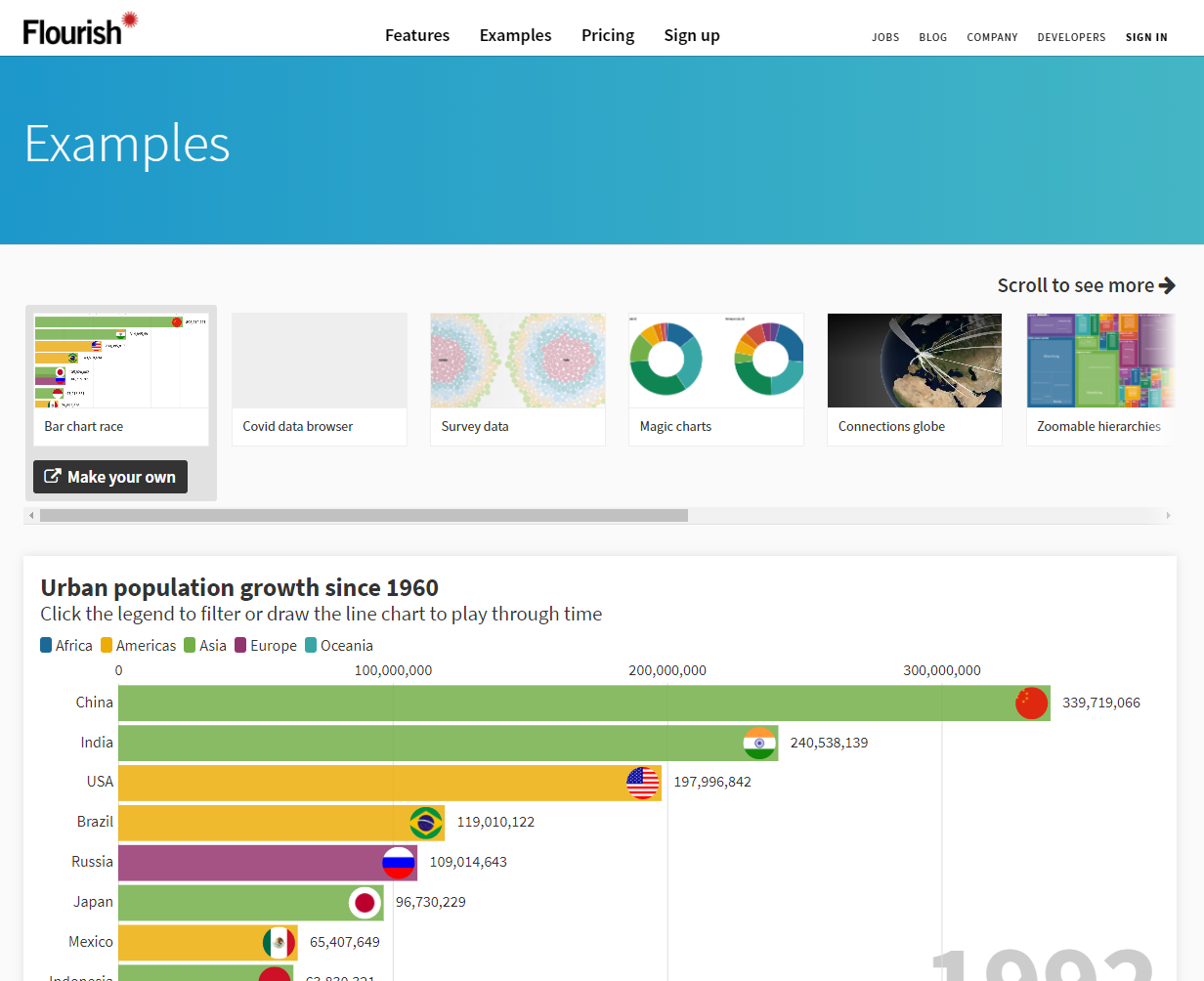
So with the “how” sorted, I needed the “what”, or in other words, the topic.
The website I was going to be creating the graphic for is in the sports niche. So after a quick brainstorming and Googling session I decided to create a racing bar chart — from here on I’ll call it a “live graphic” as that’s what the press tends to call them — showing how Forbes’ list of the highest paid athletes has changed over time.
Hint: money/earnings is always a good topic.
And after a long day of collecting data, getting to grips with Flourish, then finalizing the live graphic and associated write up, the piece was ready to launch.

The results after outreach?
Some seriously strong links from the likes of The Sun (DR89), MSN (DR92), Fox Sports (DR77), and Digg (DR92).
And well over 10 million views on social media. Even Floyd Mayweather shared the live graphic on Twitter…
Congratulations to all the athletes on this list. https://t.co/7astfRrTh1
— Floyd Mayweather (@FloydMayweather) December 11, 2019
Was it a one off?
Nope. A few weeks later we followed up with another live graphic. This time we showed how English football’s all-time league table has changed over time.
This graph shows the all-time top flight table for English football… 📊️⚽️
📹 https://t.co/VBU8Grmlwh pic.twitter.com/z0rx4U4vcn
— SPORTbible (@sportbible) January 3, 2020
And once again, we picked up some great links.

How to do it
- Keep an eye on social media for “hot” data viz formats
- Pick a topic relevant to your niche
- Collect data
- Create a visualization which illustrates the data in a simple, easy to digest format
- Promote through outreach and social media
2. Create a “resource hub” for a current news topic
What’s the difference between a resource page and a resource hub?
Well, when you think of a resource page, you’ll probably picture a page like this…

Basically a list of external links on a topic. Can be useful for sure, but it’s a little dry.
On the other hand, check out this resource hub for rent control laws in the United States…

In addition to resource links, we’ve got an interactive map, and a timeline of legislation relating to rent control.
The aim? To have all the important news and information for the topic in one place. And to make it the go-to source (or hub) for journalists when they need stats or info.
The result? Some super high quality, relevant backlinks, including DR90 realtor.com.
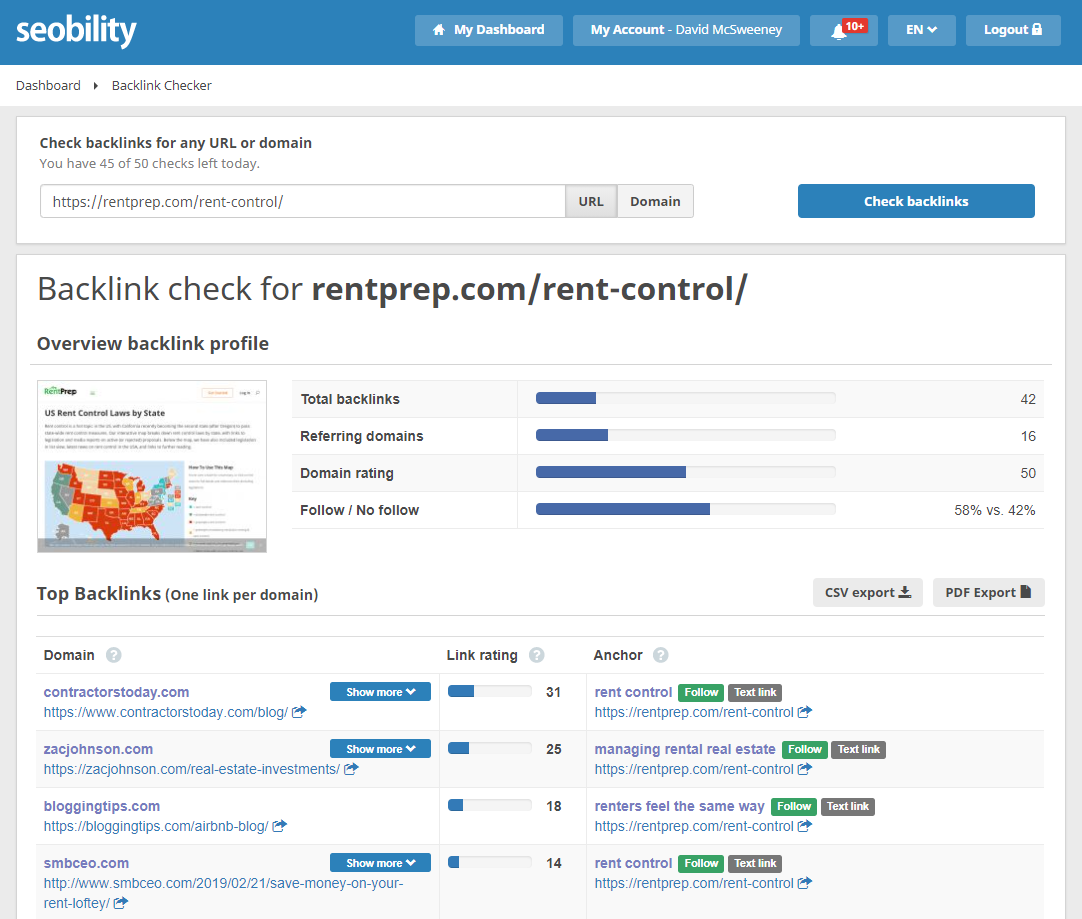
Here’s another resource hub that’s picked up some great backlinks from massive authority sites including the New York Times and USA Today.
How to do it
- Keep an eye on the news for trending topics related to your niche
- Create a “hub” page for the topic which includes all the latest news and developments on the topic + relevant links
- Include a visual element (e.g. a map) if possible
- Pitch the resource hub to journalists who are writing about the topic, and other relevant sites in your niche
3. Leverage the power of FREE with a tool or calculator
What’s better than a cool tool? A FREE cool tool.
And the right one can be an absolute MAGNET for links.
Like this one that calculates target heart rate based on your age, and the percentage of your maximum heart rate you want to hit…

…which has picked up a bucket load of backlinks.
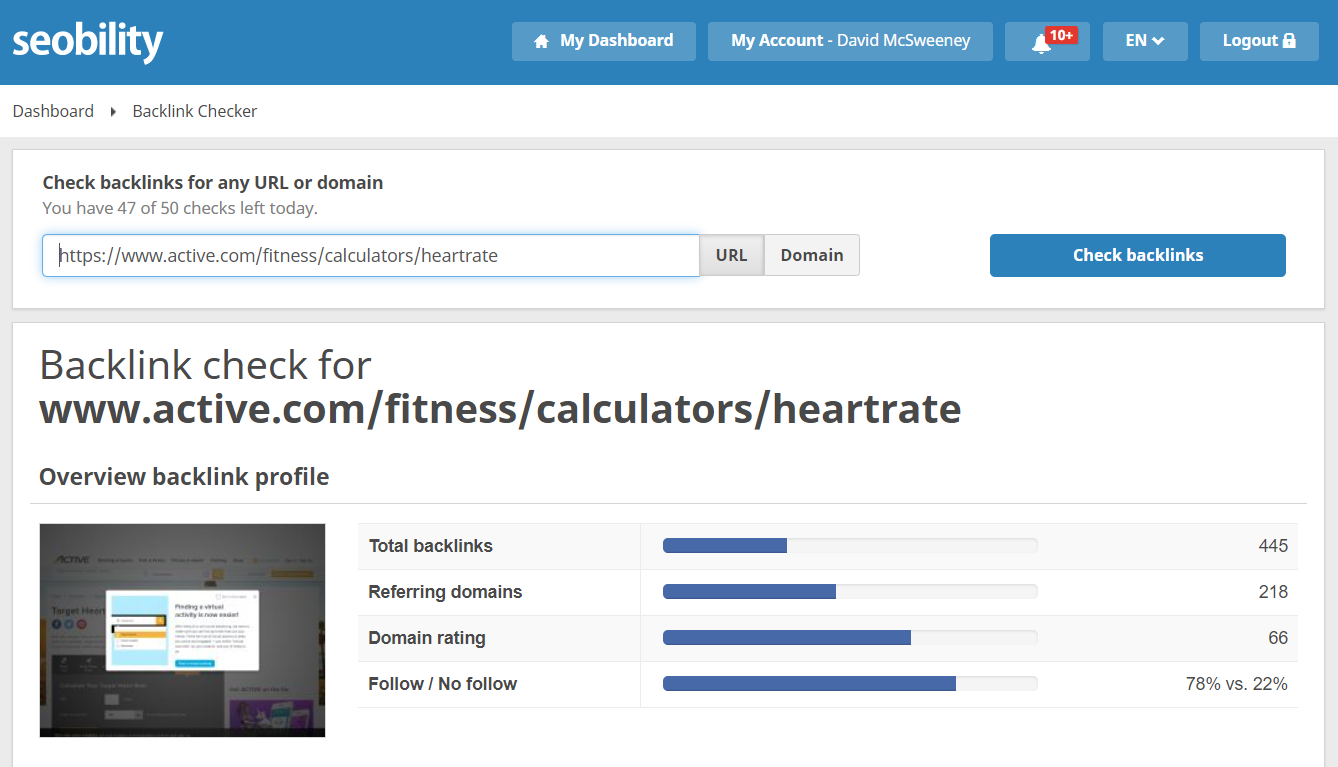
Now that may look complicated. But it’s actually a super simple calculation (you can see the working on the CDC website here).
And any programmer worth their salt would be able to knock it up in a couple of hours.
We’re a big fan of the free tools link building tactic at Seobility.
Our free SEO checker has picked up 168 referring domains…

And we recently launched a free, stand alone SERP snippet generator tool which we’re about to start promoting.

Check it out here, and if you like it… feel free to drop us a link 😉
Bonus tip: create a “fun” tool for viral traffic + links
Tools don’t have to be boring.
A fun tool can pick up both quality backlinks and a load of viral traffic.
Here’s one I created back in 2018, which calculates how many shots it would take a golf pro to earn your salary.

It picked up some nice links from high authority sites…
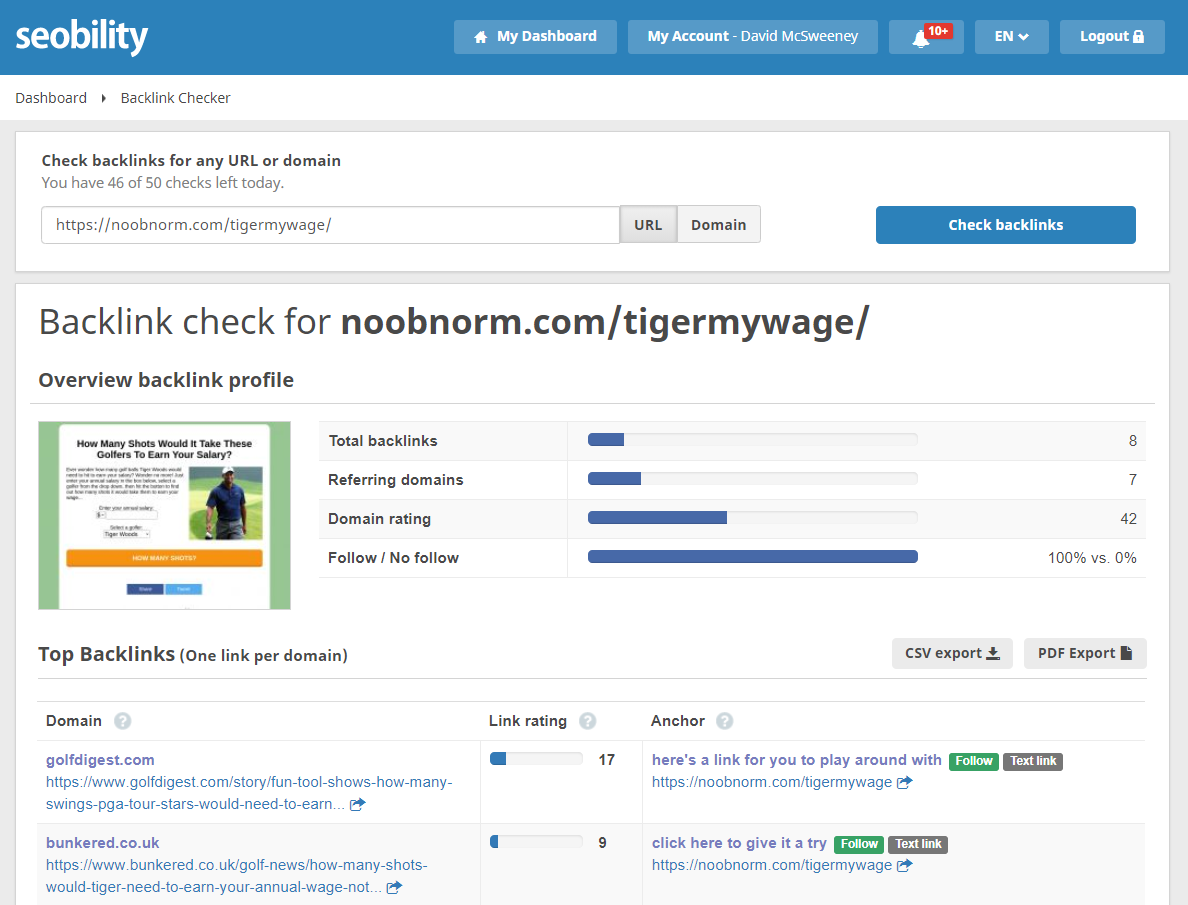
…and racked up over 50,000 views from referrals and organic social shares.

Still need convincing about how great free tools are for picking up quality backlinks?
Alright. Here’s one more example. And this one has picked up an INSANE number of links.
On 28th February 2021, MyHeritage launched “Deep Nostalgia” on Product Hunt.
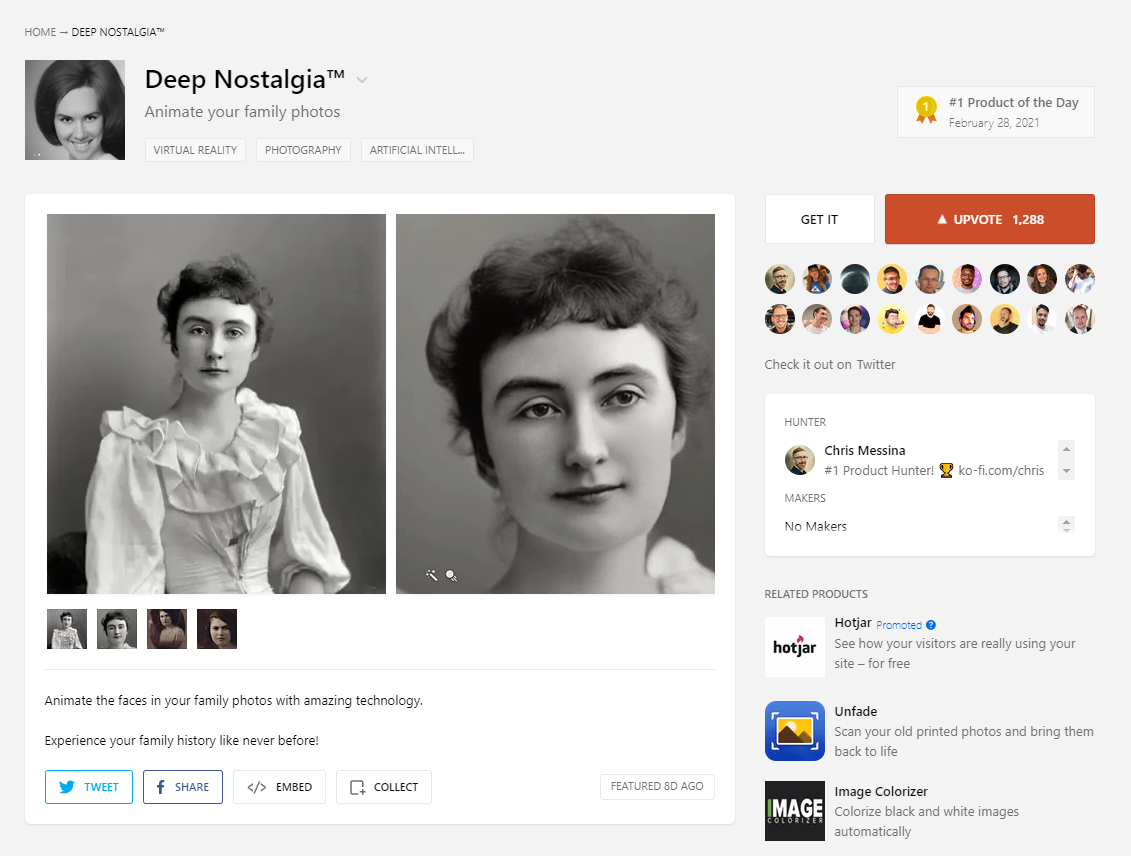
What’s Deep Nostalgia? An incredible (if somewhat freaky) tool that uses deep fake tech to animate your old family photos.

You can try it out here.
Within one week of going live, the tool had picked up well over 2,000 backlinks…

…and a ridiculous amount of press coverage.

By combining the past and the future in a free tool, My Heritage scored a HUGE link building and PR win.
And talking of the past leads us neatly onto our next link building tactic.
How to do it
- Brainstorm common calculations related to your niche, or
- A problem you can solve with a tool (e.g. our SERP preview tool)
- Code up the tool
- Pitch the tool to other sites in your niche
4. Take advantage of the passage of time
Ancient Greek philosopher Heraclitus of Ephesus said that ‘Change is the only constant in life’.
We’re pretty sure he wasn’t thinking about building links at the time. But some 2,500 years later, it’s definitely an outlook we can take advantage of.
Because here’s the thing:
Lots of articles contain statistics. And statistics change.
For example, back in 2017, Roger Federer overtook Tiger Woods to become sport’s all-time highest earner (individual prize money).

Which meant that overnight, every article on the web mentioning Tiger Woods as the top earner was out of date. Or in other words… wrong.
The opportunity here? Hopefully it’s obvious. But just in case it’s not…
…if you had a sports site, you could:
- Create a page about Federer becoming the highest earner
- Reach out to all the sites who still list Tiger Woods at the top and let them know he’s been knocked off his perch by Roger
- Suggest your page for a citation link
Regardless of your niche, stats (and facts) will change. And if you’re quick off the mark, that’s definitely going to present opportunities for picking up links.
Pro tip: Use Google’s date filter to find old articles
When searching Google for outdated content link prospects, you may find that most articles returned were published recently. But you can use Google’s date filter to find older articles.
You’ll find the filter by hitting the “Tools” button under the search bar.
In the example below, I’ve set the filter to only show articles published in 2017.

And of course, 3 year old articles are bound to be out of date.
5. Run a survey (then write a catchy headline)
Our survey says that 79% of journalists love surveys.
Ok, we made that up.
But whatever the actual percentage, there’s no doubt that surveys continue to be a great way to grab media coverage (and for our purposes high quality backlinks).
Just browse the latest articles on any big media site and you’re bound to find a few stories based on the results of recent surveys.
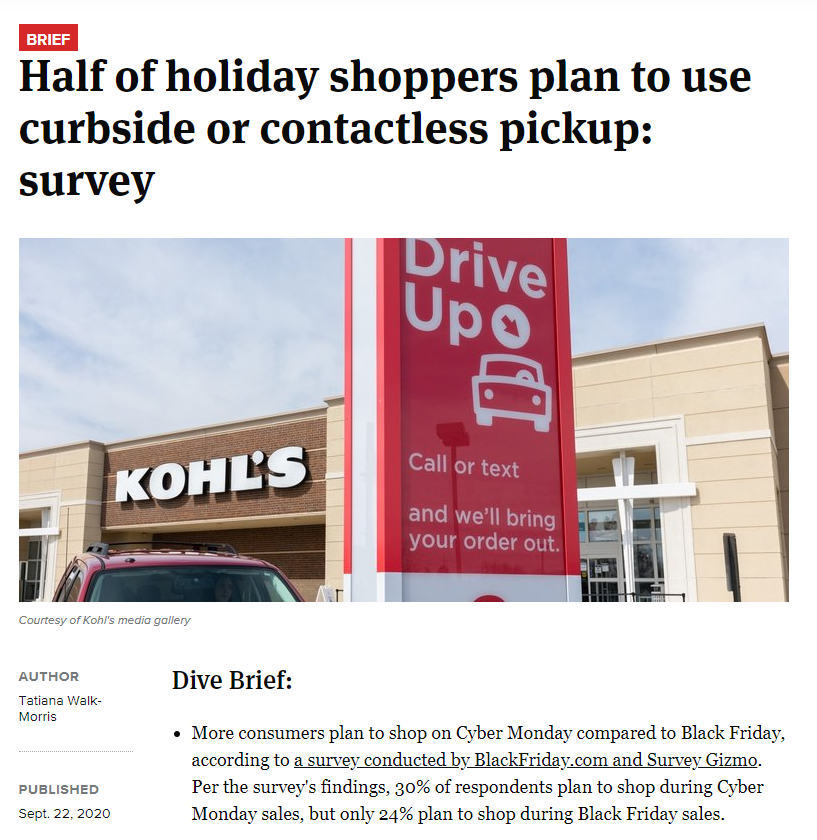
But running a survey is expensive right?
Not necessarily.
Because the good news is you don’t have to spend THOUSANDS commissioning a polling company to do it for you.
For example, UK boiler review site Heating Force ran a Facebook ad to poll 1,256 UK householders about their central heating habits.
The survey was picked up by a number of industry blogs and regional newspapers, including the DR81 Liverpool Echo.
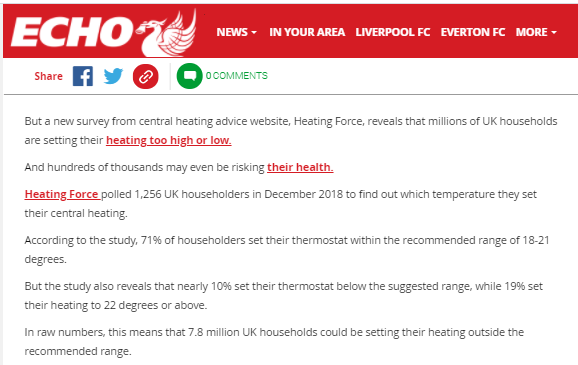
This is a good example of where a little PR knowledge comes in handy.
From the stats in the screenshot above, we could create 3 headlines for a press release:
- 71% Of UK households Set Their Thermostat To The Correct Temperature
- 29% of UK Households Are Setting Their Heating Too High (Or Low)
- Millions Of UK Households Are Setting Their Heating Too High (Or Low)
Which is most likely to grab a journalist’s attention?
If you answered 3, you’d be correct.
Because while the survey actually revealed that most people set their boilers correctly, that’s just not going to make for an interesting story.
So we want to focus on the 29% who don’t.
And when it comes to a headline, hyperbole is never a bad thing. “Millions” just sounds a lot more than 29% – even though it’s expressing exactly the same statistic.
If there’s an opportunity to use a bigger number… use a bigger number.
Don’t be shy.
How to do it
- Run a survey on a topic related to your niche (Survey Monkey is cheap and cheerful for data collection. Alternatively, JotForm offers a free survey maker.)
- Create a catchy headline based on the results
- Pitch the headline and key takeaways to journalists
6. Compare Cities/States/Countries
Us humans love a bit of rivalry.
“My town is better than your town!”
“My state is the friendliest in America!”
Which is why studies comparing locations (cities, states, or countries) attract high quality backlinks like moths to a flame.
The big media sites know that if they cover them, they’re bound to get a ton of traffic and shares.
And local publications LOVE anything that shows their city (or state) in a good light.
Example? Every year, U.S. News & World Report publishes a ranking of the best places to live in America…
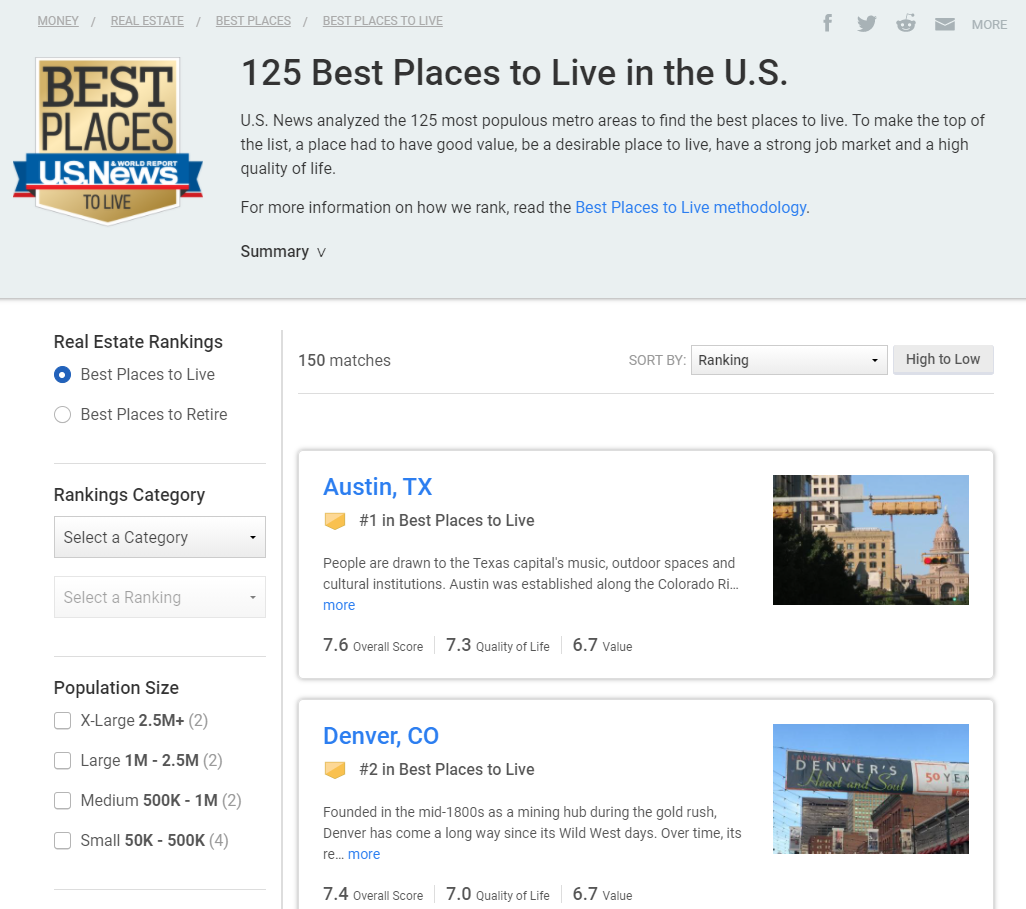
…and it always picks up a shed load of links.

But like tools, studies don’t have to be dull.
For example, this fun little study from HerNorm — which shows the most popular time of year for breakups in each US state — picked up some great links from the likes of DR86 mlive, and DR92 Daily Mail.

Pro tip: 50states.com has a useful directory which lists all the major news publications in each US state.

How to do it
- Collect data at city, state, or country level
- Create a comparison between the locations (graphic, chart or list)
- Pitch the comparison to national and local publications
7. Become a source for original photos
Seen this guy before?

These days “hide the pain Harold” is most likely to pop up on a Reddit meme.
But believe it or not, there are still plenty of sites using “Harold” (real name András Arató) as a stock photo to illustrate their page…

(know your meme, Age UK)
Because the thing is, sourcing original images for your content is tough. While sites like Pixabay have made the task a little easier (or at least cheaper), the selection is still somewhat limited.
And any stock photo you use is guaranteed to appear on dozens (or even hundreds) of other sites.
For the link builder… that’s an opportunity.
Because if you’ve got a library of original photos relevant to your niche, you’ve got something that other sites in your industry actually want.
And bluntly, that’s what good link building is all about — providing real value to potential linkers (more on that shortly).
You can use Google’s reverse image search to find sites using stock images.
For example, if we search for this image on Pixabay, we can see that it’s… well… everywhere.

So what’s the plan from here?
Simple.
Email all the sites using the stock photo and offer them a replacement image — ideally one that’s going to be exclusively for their site.
Request a link credit in return for the photo.
I used this exact tactic for my golf site last year…

…and picked up 15 links from 74 outreach emails.

A decent hit rate, and a good excuse for a day out in St. Andrews 🙂
How to do it
- Build up a library of original photos relevant to your niche
- Find sites using stock images (reverse image search)
- Reach out to those sites and offer them original (and ideally exclusive) photos in return for an attribution link
8. Create landing pages for your popular videos
Published a cool video on YouTube? Picking up some traction and getting widely shared on other sites?
Great!
But…
…from an SEO perspective all those embeds aren’t really going to help your site’s rankings.
Sure, they’ll help your video page on YouTube rank higher. But wouldn’t it be better to also be pulling in links (and traffic) directly to your site?
The solution? Create landing pages for your YouTube videos.
New York law firm De Caro & Kaplen did just that for their popular video “The Invisible Rain Cloud”.
The video explains what it’s like to live with traumatic brain injury…

…and the page included:
- The embedded video
- Facebook comments
- A slideshow version of the video with script
- An explanation of why they created the video
- Links to further reading
The result? Some super high quality backlinks, including one from DR92 Business Insider.

Pro tip: use Seobility’s free backlink checker to find sites who have already embedded your YouTube video. Just paste the YouTube URL into the box and hit “Check backlinks”.
How to do it
- Find your most popular YouTube videos
- Create landing pages for the videos which include additional information and resources
- Reach out to sites who have embedded your videos and ask them to link to the landing page
9. Turn your own data into a story
It should be clear by now that statistics are a powerful way to attract attention (and links).
And whether you’re commissioning a survey, or mining wikipedia for sports stats, good data can make for a great story.
But there’s another place to find interesting statistics and trends: your own data.
Jobs site Glass Door does a great job of this (pun intended). They use anonymous salary data collected on their site to work out average salaries for various professions.
Then they create individual landing pages for the statistics…

…which pick up loads of great links.

With a bit of thinking, most businesses have data they can use.
For example, if you’re running an online t-shirt store it could be as simple as yellow t-shirts overtaking red ones in terms of popularity (sales). Figure out why, and that’s a story.
How to do it
- Look for changing trends, or interesting takeaways from the data your business collects from visitors/customers
- Turn that data into a story
- Pitch the story to journalists and related sites
10. Spread the link love
Worried about reciprocal linking?
Don’t be. It’s perfectly natural for sites in the same niche to link to each other. That’s not a link scheme, it’s just how the internet works.
The fact is, it’s a lot easier to get someone to link to you if you’ve linked to them first. You’re on their radar. You’re one of the good guys.
So whenever there’s an opportunity to link out… then link out.
At Seobility, we’ll regularly link out to other marketing and SEO sites from our blog posts. Then as soon as we hit publish, we’ll send a quick email letting them know we featured them.
And like most outreach, it’s best to keep your emails short and to the point. Here’s a template you can use:
Subject: We featured {name of site} on the Seobility blog!Hey {name},
Just a quick email to let you know we featured your article on {x} in our recent guide to {y}.
You can check out the guide here. Hope you like it!
Thanks,
{your name}
You’ll notice that we’re not asking for links or shares here. If they like it, they’ll know what to do.
But we’ve started building a relationship. And we’ve “given before we’ve received” which should make this site more receptive to future outreach.
Pro tip: if you get a reply, then sometimes it’s a good time to be a little more aggressive. For example, we might use something like the following to ask for a link to our recent study on how-to rich snippets:
Their reply:
Our reply:
Awesome, really appreciate that.BTW, I noticed you recently covered rich snippets and thought you might be interested in the results of a mini study we published on how-to schema. In summary, we found that only 18.8% of “How to” queries included the relevant schema. I’ve attached a graphic if you think that stat would be a good addition to your post 🙂
This approach is likely to yield a better hit rate than cold outreach.
How to do it
- Link out to related sites in your niche where relevant
- Reach out and let them know you linked to them
- Ask for a link once you’ve built a relationship
Five other tactics you can use to grab high quality links in 2021
We separated these five tactics out from the main list as they’re a little ‘old hat’.
But in the right circumstances, they still work.
11. Broken link building
We won’t bore you on the broken link building process
THOUSANDS upon THOUSANDS of words have been written about broken link building. And you’ll see it as a recommended tactic on most link building guides.

It’s easy to summarize:
- Find a popular page on a website that’s got a load of links, but has now gone (i.e. returning a 404 error)
- Create a similar page on your own site
- Reach out to everyone who’s linked to the 404 page, point out the broken link, and ask them to link to you instead
And it’s one of those link building tactics which sounds great in theory.
In practice… it can be a bit ‘meh’. Because:
- It’s not as effective as it used to be
- Most of the time you’ll get a better ROI (be that measured in time or money) by using one of the tactics from our “main” list
However, with that being said, in specific cases broken link building can still be pretty powerful.
My experience? Those cases tend to be when an entire site, or better, a service has gone.
As an example, I recently used broken link building to help a tech startup pick up around 200 homepage links.
The top site (a specific tool) in the niche had gone, but was still recommended and linked to from a ton of guides and docs.
So if you spot a tool or service in your niche going out of business, then that’s definitely an opportunity to run a broken link building campaign.
But broken link building to individual pieces of content can be hit or miss. YMMV.
For reference, we got around a 36% conversion rate from outreach, with roughly half of the conversions requiring a follow-up email before they added the link.
12. ‘Stealing’ your competitors links
Stealing competitor links is another (cool sounding) tactic you’ll see on every link building guide on the planet.
With the advice being to:
- Find popular pages (i.e. lots of backlinks) on competitor sites
- Reach out to those sites and point them to your (ideally better) content
The problem:
First of all, this generates a load of emails like this…
Hey {name},
I saw you linked to {competitor page} from your article on {topic}. I also wrote about {topic} {here} and was wondering if you would add my link to your page?
…which have about as much chance of converting as I have of out-driving Bryson DeChambeau.
423-yard drive. 💪
Hits approach to six feet. 🎯
Makes the putt. 🐦@b_dechambeau gets back to even par.#QuickHits pic.twitter.com/b7DOnHR5oo— PGA TOUR (@PGATOUR) July 16, 2020
And secondly, by focusing solely on replicating your competitors links you’re never going to overtake them. After all, they already have those links. You’re not actually ‘stealing’ them, you’re copying them.
But that’s not to say analyzing your competitor’s backlinks isn’t important. It is.
Why? Because it’s the best way to find out what’s working in your niche.
Are your competitors running surveys? Data pieces? Are they publishing huge guides that attract a lot of links?
Who’s linking to them and why?
With a bit of reverse engineering you’ll be able to figure out:
- which link building strategies to focus on, and
- the types of sites that are likely to link
And I say ‘types’ of sites for a reason.
Because while, yes, it’s still worth trying to replicate competitor links — but please, not with the outreach template above — it’s just as important to find sites that are NOT linking to them.
Your goal isn’t to match your competitor’s links, it’s to beat them.
So find out what’s working for your competitors… then do it better!
You can use our free backlink checker to analyze the backlinks of three URLs (or domains) per day.
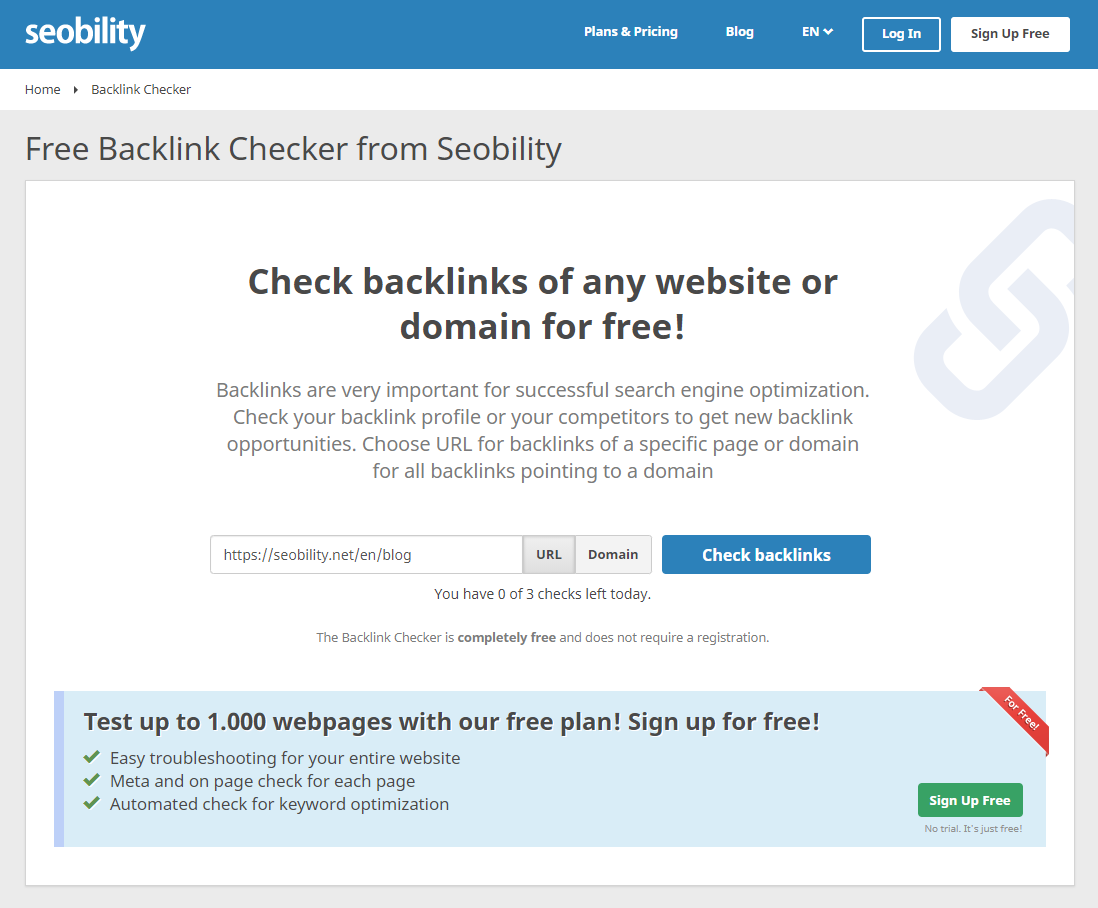
But you’ll quickly burn through that… so we recommend signing up for a premium plan to get 50 free searches per day 🙂
Pro tip: use Seobility to find link hubs
Link hubs are pages that already link to two or more of your competitors.
They’re prime link building opportunities.
And with our Premium plan (grab a free 30 day trial here) they’re super easy to find.
On the Backlinks tab for your project — read our quickstart guide if you’ve just signed up — you’ll find a box labelled “Competitors”.

If you haven’t already added them, you can click on “Add competitor”.
We’ll recommend domains that rank for similar keywords (select them by clicking “Add”), but you can also manually add competitors in the “Enter custom competitors” box.

Once you’re done, hit “Calculate opportunities” on the “Link building tools” report.

In the example above we can see that Seobility has found 12 pages that link to more than one competitor.
We can click into the report for a full list….
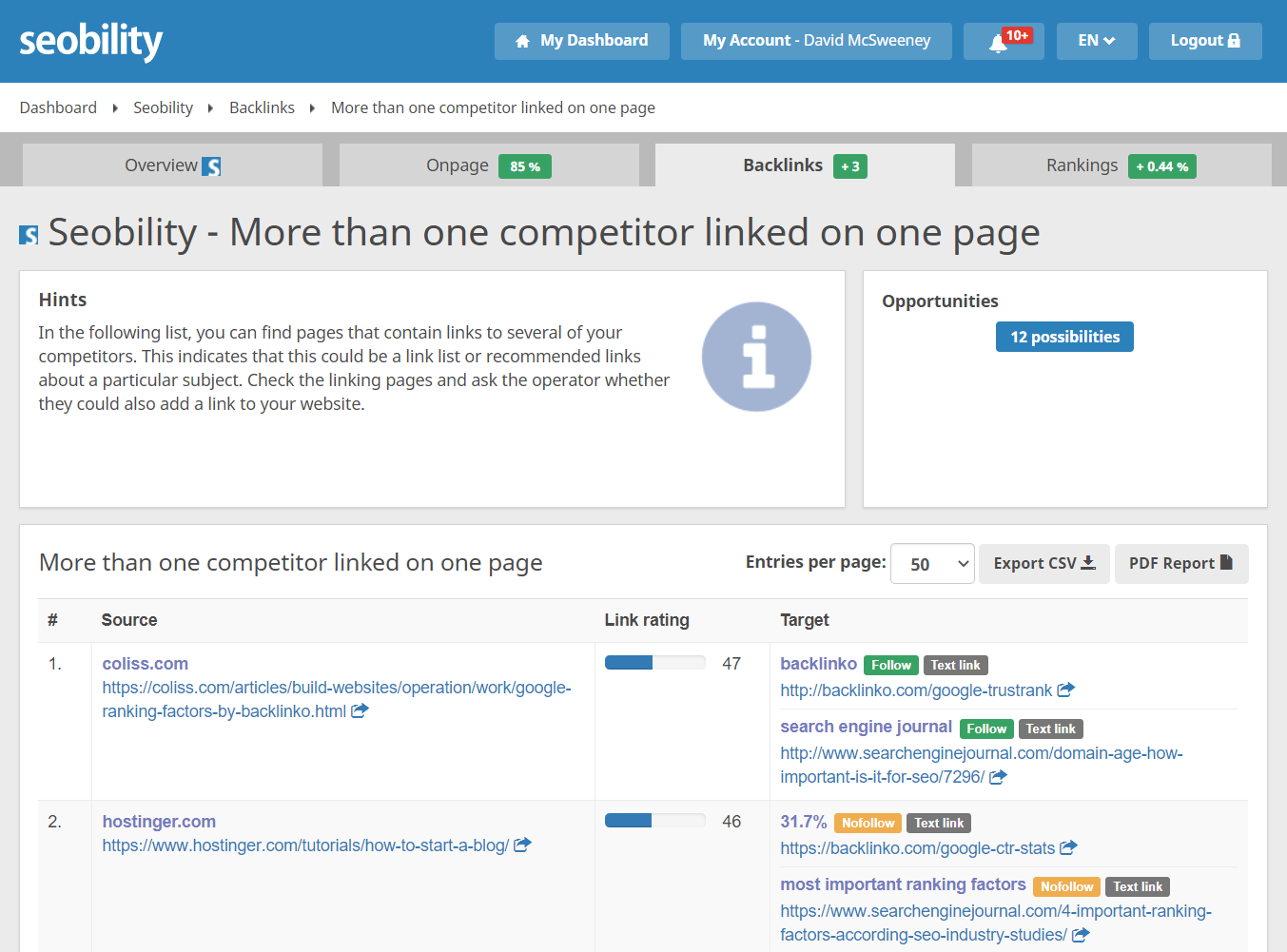
…and then work our way through and reach out to the websites where we think our link would be a good addition.
Easy peasy.
13. Guest blogging
Guest blogging has been dead for years.
Except it hasn’t been.
Look into the link profile of any top site and you’ll see plenty of guest posts powering their rankings.
But, spoiler alert:
They probably paid for most of those “guest post” links (more on that in a moment).
Our advice? There’s nothing wrong with guest posting as part of your overall strategy. But focus on securing a small number of guest posts on the top sites in your niche.
You’ll get super strong backlinks and actual referral traffic.
On the other hand, if you’re playing the numbers game…
…it might work in the short to medium term. But you’re running the risk of problems (i.e. penalties or ranking drops) further down the line.
14. Business directory links, and social media profile links
Some backlinks are tough to build. Others just require a little grunt work.
Business directory links and social media profile links fit into the latter category.
Social media profile links in particular are an absolute no-brainer. In fact, they should probably be the very first links you build.
Your Twitter page, your Facebook page, your Pinterest page, they all let you add a link…
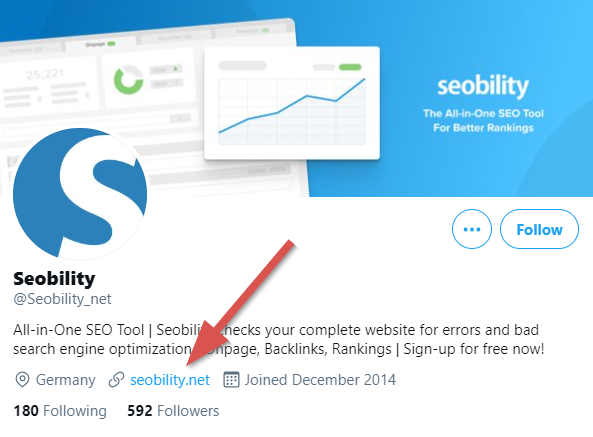
…so do it!
(and give us a follow on Twitter while you’re in there)
Business directory links are most commonly recommended for local SEO. But as long as your website has a physical address, there’s no reason for you not to add your company to a relevant category on a quality business directory.
Bright Local has a good list of the top 50 business directories in the USA.
These aren’t going to be hugely powerful backlinks on their own. But as part of your overall link profile, they’ll help to build up your site’s trust.
Note: business directory links (or at least the listing itself) are often called citations. But to avoid confusing them with the next tactic on our list, we’ve omitted that term above.
15. Monitor for unlinked brand mentions
When someone mentions your website or brand, but doesn’t link, that’s called a citation.

There’s a bit of debate about whether Google may give some SEO value to an unlinked mention.
It makes sense that they would, and it’s certainly something they’ve been considering for years…

…but according to John Mueller they’re probably not at that stage yet.
The short version is “usually not, imo”. The long version is somewhat hard to squeeze into tweet form, and I’m not in the mood to write a long essay, so hopefully the short version is useful as a starting point 🙂
— 🍌 John 🍌 (@JohnMu) May 21, 2020
Either way, if someone mentions your website or brand in a positive light (but doesn’t link) it makes sense to reach out and ask them to consider linking up the citation.
In some ways this is low hanging fruit. After all, the journalist or website has already written about your brand and they know who you are.
And most of the time a quick, friendly email will secure a backlink.
But you won’t always be successful. Some publications just have an internal policy where they won’t link out.

So don’t expect a 100% hit rate, but do expect a high one!
Tip: you’ll get more success reaching out quickly after publication while the article is fresh in the author’s mind. So set up Google alerts for mentions of your brand, your name, and your website’s domain.
Two “spammy” link building tactics that are currently working (but REALLY shouldn’t be)
Now for the twist in the tale.
Because right at the start of this guide we defined link quality as:
‘the likelihood of an individual link improving our rankings’.
And we stand by that definition.
But it poses a problem.
Because in addition to the 13 white hat link building methods detailed above…
…there are a couple of “spammy” link building tactics that are also doing just that (i.e. improving rankings).
Analyze several sites in a niche (which we do every day), and you’re bound to come across them.
And on the Seobility blog we aim to be as transparent as possible with our readers. Which means that while most SEO blogs will only tell you about the white hat methods…
…if a “spammy” tactic is clearly working, we’ll cover it.
But let’s be clear:
We are NOT recommending these tactics. We’re simply pointing out that the current evidence — based on analysis of THOUSANDS of search results — suggests they are working.
And to be doubly clear:
Our advice is to stick to white hat, Google friendly SEO and link building tactics on this list.
But it’s your site. And if you want to take the risk of a penalty further down the line… ultimately, we can’t stop you.
So with that being said, let’s move on.
301 redirecting expired domains
We’re not going to give examples here as it’s not our intention to ‘out’ anyone.
But 301 redirected domains are powering the rankings of a TON of sites, particularly in the affiliate marketing space.
In theory, this doesn’t have to be spam.
For example, if you acquired a competitor it would be perfectly valid to 301 redirect their site to yours. Acquisitions and mergers were part of business long before Google — when Larry Page and Sergey Brin were but glints in the milkman’s eyes.
But in practice…
…we generally see unrelated, high DA expired domains being redirected. Think a site for a holiday resort that went bust being redirected to a site about VPNs.
And for now at least, it’s working.
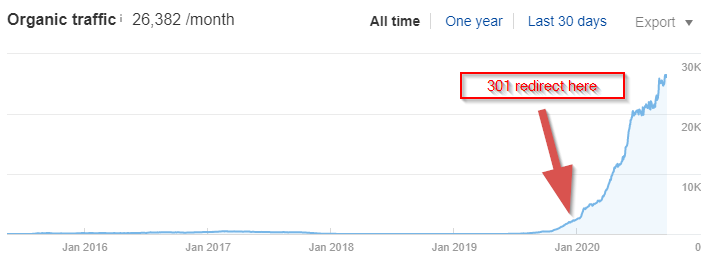
Buying links
Buying links for the purposes of improving rankings is against Google’s guidelines.
And if you’re caught doing it you’ll get slapped with a penalty.
But the fact is, link buying and selling is rife.
And these days, it’s pretty blatant. Reach out to a low-mid DA site and there’s a fair chance they’ll ask for payment in return for a link.
If you’re looking through a competitor’s link profile and you see an exact match anchor text link to a commercial page…
… nine times out of ten, they’ve paid for that link.
Which means of course — if you want to go down that route — you can probably buy a link from that site too. And as long as the site isn’t under penalty (a healthy amount of organic traffic would be an indicator that it’s not) it will probably boost your rankings.
But again:
If you get caught buying links you’re likely to get hit with a penalty. And we don’t recommend anything that’s going to get you into trouble down the line. So “caveat emptor” and all that.
Note: if you buy a link with the rel=sponsored attribute attached you’re not violating any guidelines, but it’s also unlikely to boost your rankings.
Second note: any SEO provider offering you a “niche edit” service is almost certainly just offering to be the middleman in a link purchase.
Bonus: the ‘secret’ to good link building
Link building is:
- part creativity (coming up with a cool idea)
- part grunt work (spending hours on creating content and outreach)
- part analysis (combing through your competitors links)
- part relationship building (easier to get links from someone who knows you)
- part luck (let’s be honest, sometimes you’ll just catch someone at the right time)
But if there’s one ‘secret’ to good outreach (and good link building) it’s this:
You’ve got to work out what’s in it for THEM.
What’s in it for you is easy. You get a link that’s going to boost your rankings.
But most webmasters aren’t philanthropists. And simply asking someone to go into an old post and add your link because you think it’s going to be a “good addition” isn’t going to cut the mustard.
Like any transaction, there has to be a value trade. You get something (a link), they get something in return.
So what can that something be?
Well, here’s where it gets interesting.
It may seem like it would be tougher to get links from big authority media sites. But sometimes it’s actually easier.
Why? Because they have an inbuilt audience. And they know that if they share your cool graphic, stat, or survey, they’ll be able to drive social traffic (and collect ad dollars).
On the other hand, a low-mid authority site probably doesn’t have that existing audience. Sure their site may generate decent search traffic, but that comes over time. And posting an article covering your piece is probably only going to generate them a dribble of traffic at best.
Which is why more often than not they’ll ask for payment in return for adding your link.
But we want to avoid that. So what other ways can you provide value? Here are some ideas:
- Providing original photos for their articles (tactic #7 in our main list)
- Providing free products for review (or free use of your software)
- Offering to update an old article for them
- On a guest post pitch, offering to write about a keyword their competitors are ranking for, but they’re not (a content gap)
- Offering replacements for broken links (a bit hit or miss as I said previously)
- Offering to run paid ads to your guest post (guaranteeing them X amount of traffic)
- Creating a video or audio version of their post
With a bit of thinking you’ll be able to answer the “what’s in it for them?” question for most link requests.
And by doing so you’ll see your conversion rate from outreach skyrocket.
Ready to start building high quality backlinks?
This list of link building tactics isn’t exhaustive.
But we’ve focused on the most effective ways to pick up high quality, traffic boosting backlinks right now.
Methods that will give you a high return on your investment (be that in time or money).
And with the fifteen white hat link building tactics on our list, there’s no need to go down the 301 redirect or paid link route.
So pick a tactic and start building those high quality backlinks!
Any questions or link building tactics you think we’ve missed? Just leave a comment below.
PS: Get blog updates straight to your inbox!

